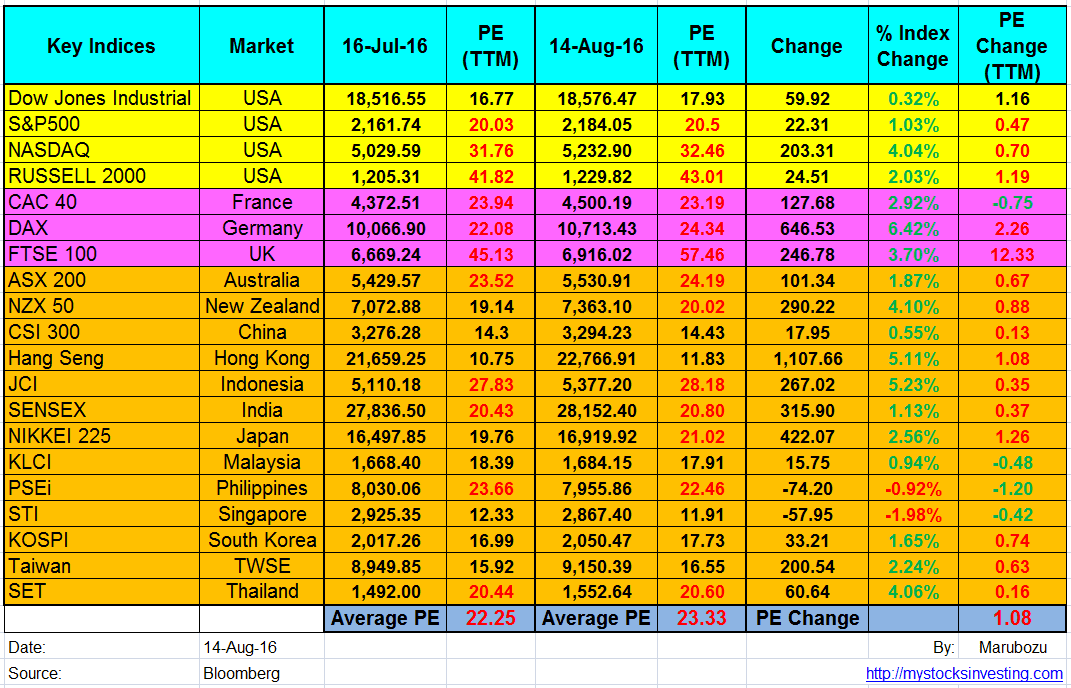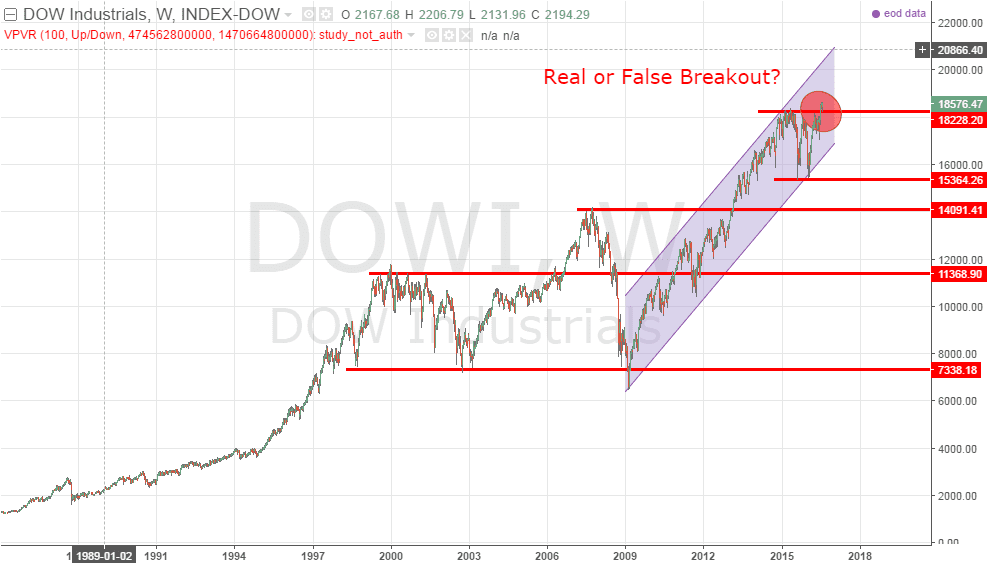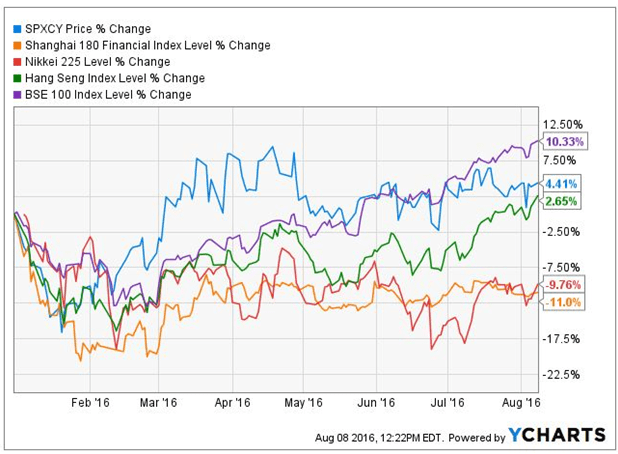Caveat Emptor for Investors: Signs of Increasing Stress Emerge
By Sani Hamid
The present investing environment is not an easy one to decipher. On one hand equity markets seem to be finding their footing after a rocky start early this year with markets in the U.S. are hitting historical highs, for instance. On the other hand, moving in tandem we have the bond market continuing to attract large inflows even as yields move to historical lows and with a growing number of bonds yielding negative interest rates.
And then there is the world economy, which is generally a mixed bag – China is showing signs of stabilisation, the US has seen a series of patchy data, none of which convincing enough to call for a rate hike by the Federal Reserve; and in aggregate the global economy seems to be mired in this slow grinding growth which it is unable to come out of despite the many efforts of central banks and governments.
So what is exactly happening in the markets? Why are equity markets like that of the U.S. rising amid a slow growth environment and amid a risk-off environment as suggested by the bond market? In our view, the answer lies in the excessive liquidity that is found in the global financial system today.
Chart 1: Global financial system awash with liquidity

Source: FA Wealth Management
The fact of the matter is that the global financial system is awash with liquidity courtesy of the central banks of developed countries (namely the Federal Reserve, Bank of England, European Central Bank and Bank of Japan) plus some developing countries (Peoples Bank of China). Chart 1 shows the multiples of which these central banks have increased their money supply vis-à-vis prior to the 2008 Global Financial Crisis (GFC). As we can see the U.S. has done so the most with its multiple Quantitative Easing – the Fed has injected about 5 times more of liquidity than prior to GFC. While the Fed has official stopped its QE program, others such as the BOJ, ECB and PBOC have not. And to add to this, not only did the authorities flood the system with a tsunami of liquidity, they ensured that it came at a cheap price, in an effort to spur the usage and thus economy. Chart 2 shows that for many developed countries, their interest rates have declined sharply and are near zero and in a growing number of cases, negative.
Chart 2: Abundant money came very cheap

As mentioned, the key idea behind flooding the global system with cheap liquidity is to spur consumption and thus, the economy overall – or at least that was the idea on paper. In reality, this worked for a while as money did spur consumption as economic units (households, corporations, governments, financial institutions) that were left unscaled by the GFC did indeed use the cheap excess liquidity to raise their consumption. However, this mainly came in the form of leveraged borrowing to buy financial assets such as bonds, real estate and to a smaller extend equities. Overall, two major consequences surfaced as a result of this (which many in fact deem as a mis-allocation of resources).
Firstly, this had the impact of pushing the prices of certain assets into overbought and for some, into bubble territory. For example, in terms of real estate, this is true for a few cities like London and Hong Kong which has been identified by UBS’ Global Real Estate Bubble Index (see Diagram 1). There is also reason to believe that the bond market is also grossly overbought especially G7 government papers and those with longer maturities (as these have higher yields).
Diagram 1: Property prices generally overvalued in major cities

Secondly, this had the effect of quickly bloating both the asset and liabilities of households. For a while, aggregate Net Worth (asset minus liquidity) rose as asset valuation rose faster than liabilities. But that has halted as we have clearly entered a stage whereby the assets side of households can no longer expand due to excessive liabilities (see Diagram 2) and as such, deleveraging is now taking place.
Diagram 2: Excessive household debt

Source: FT
The effect of this deleveraging is quite obvious: growth is not being generated because deleveraging does not result in consumption. As such, it comes as no surprise that the world economy itself has been such low growth for the past few years (see Diagram 3 which has been extracted from the IMF’s April World Economic Outlook) and is expected to continue to be mired in this slow and low growth environment for the next 12-24 months as households (and even . We call this a “muggy economic environment” – one which is uncomfortable and irritatingly slow and low in nature.
Diagram 3: IMF points out how growth has been “too slow for too long”

Source: IMF. FA Wealth Management
In a January 2010 article, the McKinsey Global Institute (MGI), had at that time suggested that the global deleveraging process may just be getting under way and is likely to exert a significant drag on GDP growth. Fast forward to today, it’s hard to say whether deleveraging has already started because central banks had continued to aggressively force feed the global economy with monetary stimulus throughout 2010 to present, resulting in more debt being taken on. Data that we have indicate that up until 2014, key economic units have further increased their total debt stock to 286% of GDP (see Diagram 4).
Diagram 4: The world had taken on more debt since the GFC

As such we can only warrant a guess as to whether we have reached or even moved into a deleveraging cycle. The evidence at hand does suggest we may have just entered into such a cycle. Interestingly, the MGI report provided a diagram to show the impact of deleveraging on GDP growth. The diagram shows three distinct periods: The early years where an economic downturn begins but leverage continues to increase; a middle years where the growth downturn continues and deleveraging starts; a final years where we see an economic rebound despite a continuation of the deleveraging (Diagram 5).
Diagram 5: Entering stage 2 of the deleveraging cycle

Source: IMF, McKinsey Global Institute
We believe that the world maybe somewhere near the red dot we had inserted in Diagram 5. This is based on the fact we have seen sluggish growth in recent years as explained in the earlier paragraphs. While latest data on debt is hard to come by, anecdotal evidence from the ground – financial institutions cutting back on financing; worries over job security; large and frequent corporate layoffs – all suggest that we are likely to have moved into a deleveraging mode.
The Future in a Deleveraging Environment
So what does this suggest for the future? In our view, we will likely see a GDP slowdown in the next 12-24 months together declining debt levels as we enter the second and most aggressive part of the deleveraging cycle. For financial markets which are so used to being buoyed by leverage, the combination of both deleveraging and an deceleration in economic growth, is likely to put them under pressure, especially those which have benefited from the combination of these two factors prior to this. In essence, this deleveraging cycle will likely add to the stresses that have already emerged in recent years from the misallocation of resources (read as “massive liquidity”). We term these stresses “land mines” and the trillion dollar question is whether some of these stresses will buckle under the weight of deleveraging and result in a systemic event.
If we were to pick the two biggest stresses we see today that could potentially turn into a systemic event, these would be firstly, potential losses on the bond market and secondly, a sharp pull-back in the S&P500.
Risk #1: The bond market
Bond King Bill Gross’ tweet on June 9, 2016, was much talked about as it was a timely reminder to the market on just how much money is vested into negative interest rate bonds of which Mr Gross warns of a supernova that will explode one day. Estimates put the total bond market somewhere between $110 to $125 trillion and while we now know that about 10% are on end of the scale (negative interest rates), we will not be surprised if on the other end (long-dated bonds) the concentration is multiple times higher (60-80%). This is especially so in the present environment of low interest rates where droves of investors have sought to eke out yields by moving further out the yield curve (for example the U.S. 1-year rate is 0.55% versus 30-year bond which yields 2.23% as of August 10, 2016).

However, this concentration in the long-end of the curve has also raised a huge red flag over the potential impact from rising interest rates: the longer the duration of the bond, the bigger the impact from a rise in interest rates. In fact, Morgan Stanley estimates that a 100 bp rise in interest rates would wipe off US$1 trillion off the value of bonds, a number which exceeds the losses from the mortgage backed bonds during the GFC. If we interpolate this and assume a 25bp hike (typical move by the Fed), this would translate roughly into a US$250 bln loss which someone has to bear.
The question is whether such a loss will result in a systemic risk, for example, if it results in huge losses that negative impact certain segments of the financial industry. While bond markets are typically quite deep, the exit will be seemingly very small when a panic does ensure given the size of the participants presently. And add to the fact liquidity can dry up almost immediately in today’s environment, we believe that investors need to keep a watchful eye on the bond market. The present lack of alternatives means there are very few places that investors can seek shelter from and as such, the bond market is the destination of choice for many. There are certain segments such as short-duration bonds and to an extent oversold Emerging Market debt which look reasonably ok at this point. But as mentioned, we remain vigilant and suggest having both eyes on any signs of cracks here.
Risk #2: The S&P500
With the U.S. indices hitting record highs, many would find it strange that we see it as a risk and not a reinforced belief that the U.S. equity markets remain the most attractive among the lot (Emerging Markets, Europe or Japan). The reason for our scepticism is again the fact we believe it is excess liquidity which is buoying the U.S. markets and not fundamentals. U.S. data remain patchy, with strong months alternating with weak months but the overall trend does suggest to us a weaker trajectory. For example, the much looked at non-farm payrolls had in July impressed and resulted in a strong rally on Wall Street. But the fact remains that on average numbers have been in lower in the first six months of 2016 than in any half-year since the second half of 2012 (see Chart 3).
Chart 3: Non-Farm Payroll is lower on average

Source: U.S. Bureau of Labor Statistics; FA Wealth Management
To us, the excess liquidity is making its way into the U.S. markets given the T.I.N.A. situation (“There Is No Alternative”) which also causes anomalies in other asset classes such as the negative interest rates in the bond market and stubbornly overvalued property prices in many parts of the world (especially where rental yields cannot fundamentally justify such prices). For the S&P500 for instance, the divergence between profitability growth and the index itself (Chart 4), which traditionally held a close correlation, is suggesting an adjustment will have to come sooner or later. We believe that “price” (the index) will have to adjust to earnings given that the latter will find it hard to improve under the present economic environment. While a 20% drop in the S&P500 is merely a correction in our view, it is the uncertainties surrounding how it will impact other markets and fundamentals (for example, negatively impact already weak consumer confidence further) that cause us to worry.
Chart 4: Diverging paths for profitability and price on the S&P500

Source: Alhambra Investment Partners; FA Wealth Management
In summary, we believe that we have entered into a phase where investors need to tread very are carefully. To our knowledge, no one has successfully created a model to repeatedly predict financial crisis because of the fact that every crisis is different. But what economists generally agree upon is that crisis emanate from the adjustment of excesses or a divergence from fundamentals. Today, we are seeing those excesses or divergence in certain asset classes. No one knows the exact timing of when these adjustments will occur but what we can do is be prepared.
Sani Hamid is a Director at FA Advisory Sdn Bhd. An economist, he oversees the asset allocation strategies for the company’s clients. He has more than 20 years of working experience, having worked for companies such as BNP Peregrine Securities as a Senior Economist and Standard & Poor’s Ratings as a Director in the Sovereign team. In addition, he holds a Masters in Social Sciences (Applied Economics) from the National University of Singapore and is a CFP designate.












